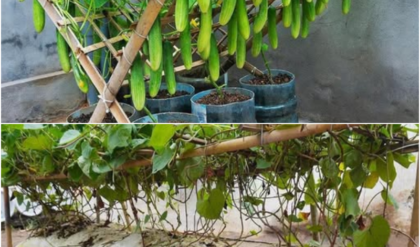In a world where sustainability and eco-friendliness are becoming increasingly important, traditional gardening methods are making a comeback. One such method is the wattle raised garden bed, a timeless technique that combines functionality with aesthetic appeal. By using flexible branches or twigs woven together, you can create a sturdy and attractive raised bed for your garden. In this article, we’ll delve into the process of building a wattle raised garden bed, exploring its benefits and providing a step-by-step guide to help you create your own sustainable oasis.
The Benefits of Wattle Raised Garden Beds:
- Eco-Friendly: Wattle raised garden beds are an eco-friendly alternative to traditional gardening methods. By using natural materials such as branches or twigs, you can reduce your environmental impact and create a more sustainable garden space.

- Enhanced Drainage: The woven structure of wattle raised beds allows for excellent drainage, preventing waterlogging and ensuring optimal growing conditions for your plants.
Improved Air Circulation: Unlike solid-sided raised beds, wattle beds allow for better air circulation around the plant roots, promoting healthier growth and reducing the risk of fungal diseases.
Aesthetic Appeal: In addition to their practical benefits, wattle raised garden beds add a rustic and charming touch to any outdoor space. Their woven design creates visual interest and can complement a variety of garden styles.

Step-by-Step Guide to Building a Wattle Raised Garden Bed:
- Planning and Design: Begin by determining the size and location of your raised bed. Sketch a rough design, including dimensions and shape, and choose a sunny spot in your garden for optimal plant growth.
Preparing the Site: Clear the area of weeds and debris, and level the ground where the bed will be placed. Use string or chalk to mark the outline of the bed to ensure accurate placement.
Gathering Materials: Collect long, flexible branches or twigs for weaving. Willow and hazel are ideal choices for their flexibility and strength. You’ll also need sturdy stakes, a hammer or mallet, pruning shears, garden gloves, and soil and compost mix.

- Building Up the Walls: Begin by weaving the branches or twigs together to form the walls of the raised bed. Continue adding layers until you reach the desired height, ensuring each layer is tightly interwoven for stability.
Securing the Top: Tuck the ends of the final layer of branches into the weave to secure them. Optionally, add a more rigid border on top for a neater finish.
Filling with Soil: Mix garden soil with compost to provide a nutrient-rich environment for your plants. Fill the wattle raised bed with the soil-compost mixture, ensuring it is evenly distributed.
Planting: Choose plants suitable for the size of the bed and the available sunlight. Plant your seeds or seedlings as per their specific requirements, and water them thoroughly after planting.
Maintenance: Regularly water your plants to keep the soil moist but not waterlogged. Add mulch to help retain moisture, and prune and maintain the wattle as needed to keep it tidy and intact.

Conclusion:
Building a wattle raised garden bed is not only a practical and sustainable gardening solution but also a rewarding DIY project that can enhance the beauty and functionality of your outdoor space. By following the step-by-step guide outlined in this article, you can create a beautiful and eco-friendly oasis where your plants can thrive for years to come. So roll up your sleeves, gather your materials, and get ready to craft your own wattle raised garden bed – your garden will thank you for it!





